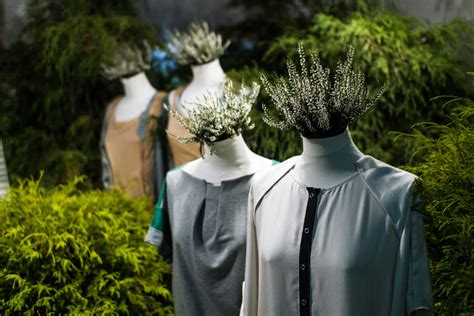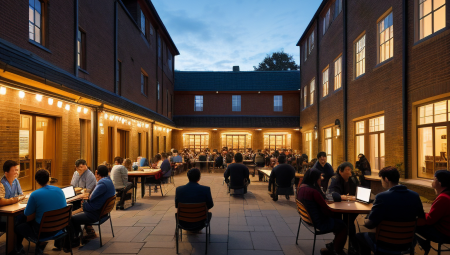Are you intrigued by the world of fashion design? From the artistic process to the influence of culture and history, fashion designers play a crucial role in shaping the way we express ourselves through clothing. In this blog post, we will delve into the fascinating and dynamic world of fashion design, exploring the creativity, trends, and sustainability that drive this industry forward. We’ll take a closer look at the role of fashion designers as artistic visionaries and social influencers, as well as their impact on the environment through sustainable and innovative materials and techniques. Join us as we uncover the intersection of fashion and technology, the business side of fashion design, and the nurturing of creative talent through education. Get ready to experience the exciting and ever-evolving realm of fashion design with us.
Table of Contents
Understanding the Role of Fashion Designers
In the world of fashion, fashion designers play a crucial role in shaping the way we dress and express ourselves. They are responsible for creating innovative and stylish clothing that reflects current trends and meets the needs of consumers. Fashion designers are not just artists, but also business professionals who understand the market and the demands of the industry.
Through their creativity and vision, fashion designers are able to influence the way we perceive clothing and style. They have the ability to create pieces that evoke emotion and make a statement, whether it’s on the runway or in everyday life. Their designs can reflect cultural trends, historical influences, and personal experiences, making them an integral part of the fashion industry.
Fashion designers are also responsible for trend forecasting and staying ahead of the curve in terms of what consumers want. They have to be knowledgeable about fabric, color, and design techniques in order to create clothing that is not only fashionable but also functional and wearable. Their role goes beyond just creating clothing; they are trendsetters and visionaries who have a significant impact on the way we dress and present ourselves to the world.
Overall, the role of fashion designers is multifaceted and essential to the fashion industry. They are responsible for creating clothing that reflects the current cultural climate, meets the needs of consumers, and pushes the boundaries of creativity and innovation. Understanding the role of fashion designers is crucial in recognizing their impact on the way we dress and the way we perceive style.
Exploring Fashion Design as an Artistic Process
Fashion design is a complex and multifaceted process that involves a deep understanding of art, creativity, and visual expression. Fashion designers play the role of artists, using their unique vision and creativity to create clothing and accessories that reflect their artistic sensibilities.
Designing fashion is more than just creating garments for people to wear. It is a form of artistic expression that involves blending color, texture, and form to create a visual masterpiece that tells a story. The process of creating fashion involves a deep understanding of the principles of design, as well as an awareness of the cultural and historical influences that shape the world of fashion.
In today’s world, fashion design has evolved into a highly dynamic and innovative field that embraces new technologies and materials. The use of innovative materials and techniques in fashion design has opened up new possibilities for designers to push the boundaries of creativity and craftsmanship. This artistic process requires a keen eye for detail, an understanding of the human form, and a passion for creating beauty through fabric and form.
Exploring fashion design as an artistic process is an exciting journey that allows designers to tap into their creative potential and push the boundaries of traditional design. It is a process that challenges the norms and conventions of the fashion industry, opening up new avenues for creative expression and innovation.
The Influence of Culture and History in Fashion Design
When we talk about fashion design, we cannot ignore the profound influence of culture and history on the clothing we wear. Fashion has always been a reflection of the society and culture that it emerges from, and this is especially evident in the way designers incorporate cultural and historical influences into their designs.
From traditional clothing to modern haute couture, the impact of culture on fashion is undeniable. Cultural traditions, customs, and rituals have all played a significant role in shaping the way people dress, and fashion designers often draw inspiration from these rich cultural heritages.
Similarly, historical events and periods have also left their mark on fashion design. From the opulent and extravagant styles of the Renaissance to the functional and minimalistic designs of the Bauhaus movement, history has provided endless inspiration for fashion designers looking to create something truly unique.
By understanding the influence of culture and history on fashion design, we can gain a deeper appreciation for the artistry and creativity behind the clothes we wear, and recognize the importance of preserving and celebrating diverse cultural and historical traditions in the world of fashion.
Exploring Fashion Trend Forecasting
Fashion trend forecasting is an essential aspect of the fashion industry, as it allows designers and brands to anticipate and respond to the ever-changing tastes and preferences of consumers. By analyzing current cultural, social, and economic trends, trend forecasters are able to predict the colors, styles, and silhouettes that will shape the future of fashion.
Trend forecasters not only draw inspiration from the world of art, design, and popular culture, but also rely on extensive research and analysis of consumer behavior and market data. With the help of advanced technologies and data analytics, trend forecasters are able to identify emerging trends and predict their potential impact on the industry.
By understanding and exploring fashion trend forecasting, designers and brands can better position themselves to meet the demands of consumers and stay ahead in a highly competitive market. Trend forecasting not only influences the design process, but also plays a crucial role in shaping marketing and branding strategies, as well as product development and retail merchandising.
Given its significance in the fashion industry, fashion trend forecasting continues to evolve with the changing landscape of consumer behavior, sustainability concerns, and technological advancements. As such, it remains a fascinating and crucial aspect of the fashion design process.
Sustainable Fashion: Balancing Style and Environmental Responsibility
In today’s world, the fashion industry is increasingly focusing on sustainable practices to balance style and environmental responsibility. Fashion designers, brands, and consumers are becoming more aware of the impact of clothing production on the planet, and are seeking ways to mitigate this impact through innovative and environmentally-friendly practices.
Many fashion designers are exploring the use of organic and recycled materials in their collections, as well as incorporating sustainable design techniques such as zero-waste pattern making and upcycling. These efforts not only reduce the environmental footprint of the fashion industry, but also raise awareness among consumers about the importance of making ecologically conscious fashion choices.
Furthermore, sustainable fashion also encompasses ethical labor practices, with designers and brands increasingly seeking to ensure fair wages and safe working conditions for garment workers. This socially responsible approach to fashion production is a crucial aspect of sustainability in the industry.
Ultimately, the concept of sustainable fashion is about finding a balance between style and environmental responsibility. It involves rethinking the way clothing is made and consumed, and embracing a more conscious and eco-friendly approach to fashion. By prioritizing sustainability, the industry can work towards a more ethical and environmentally friendly future.
Innovative Materials and Techniques in Fashion Design
Fashion design has always been about pushing boundaries and thinking outside the box when it comes to materials and techniques. In today’s ever-changing world, designers are constantly seeking new and innovative ways to create their designs. This often means exploring unconventional materials and experimenting with cutting-edge techniques to bring their visions to life.
One innovative material that has been making waves in the fashion industry is biodegradable fabric. With the growing concern for the environment, designers are turning to eco-friendly options to create sustainable fashion pieces. From fabric made from pineapple leaves to recycled plastic bottles, these innovative materials not only look stunning but also leave a minimal impact on the planet.
Aside from using groundbreaking materials, fashion designers are also coming up with new techniques to elevate their designs. 3D printing, for instance, has revolutionized the way fashion is created. Designers can now bring their intricate designs to life with the help of advanced technology, resulting in truly unique pieces that were once deemed impossible to create.
Ultimately, the use of innovative materials and techniques in fashion design not only pushes the boundaries of creativity but also addresses important issues such as sustainability and technological advancement, shaping the future of the fashion industry.
The Intersection of Fashion and Technology
In today’s digital age, the worlds of fashion and technology are colliding in ways that were previously unimaginable. The integration of technology into the fashion industry has brought about a revolution in the way garments are designed, produced, marketed, and consumed.
Wearable technology has quickly emerged as one of the most exciting developments in the industry. From smartwatches to fitness trackers, designers are now incorporating technology into their designs, blurring the lines between fashion and functionality. This has opened up a whole new world of possibilities for both fashion and tech enthusiasts, allowing for the creation of innovative and multifunctional garments.
Furthermore, 3D printing has also made a significant impact on the fashion industry. Designers are using this technology to create intricate and unique pieces that were once thought to be impossible to produce. The ability to print garments and accessories directly from a digital file has revolutionized the manufacturing process, making it more efficient and sustainable.
Lastly, the virtual reality revolution has also made its mark on the fashion industry. Brands are now using VR technology to create immersive experiences for consumers, allowing them to virtually try on clothes and accessories from the comfort of their own home. This not only enhances the shopping experience but also provides a whole new level of engagement between brands and consumers.
Fashion Designers as Social Influencers
Fashion designers are more than just creators of clothing; they have become powerful social influencers in today’s digital age. With the rise of social media platforms, fashion designers have been able to connect with a wide audience, shaping trends and influencing consumer behavior.
Many fashion designers have used their platforms to promote social and environmental causes, bringing attention to important issues such as sustainability and diversity. Their reach and influence extend far beyond the fashion industry, making them key players in shaping cultural conversations.
Through their collaborations with celebrities and influencers, fashion designers have the ability to reach millions of followers, amplifying their impact on social trends and consumer choices. Their designs and personal brands have the power to shape public opinion and influence popular culture.
As social influencers, fashion designers have a responsibility to use their platforms for positive change, shaping a more inclusive and socially conscious industry. Their influence goes beyond aesthetics, encompassing values and advocacy for a better future.
Fashion Design Education: Nurturing Creative Talent
Fashion Design Education: Nurturing Creative Talent
When it comes to fashion design education, the main goal is to nurture the creative talent of aspiring designers. This involves providing them with the necessary tools, knowledge, and experiences to help them develop their unique creative vision and style. Fashion design education goes beyond just teaching technical skills; it is about fostering innovation, originality, and critical thinking in students.
One of the key aspects of nurturing creative talent in fashion design education is providing opportunities for students to explore their own artistic voice. This can be achieved through various projects, assignments, and workshops that encourage students to push the boundaries of traditional fashion design and find their own creative expression. By allowing students to experiment and take risks, educators can help them discover their strengths and interests, ultimately shaping them into well-rounded and versatile designers.
In addition to honing their creative skills, fashion design education also plays a crucial role in preparing students for the competitive and ever-evolving industry. This involves teaching them about the business side of fashion, including marketing, branding, and trend forecasting, as well as the importance of sustainable and ethical practices. By providing students with a comprehensive understanding of the industry, educators empower them to not only create impactful designs but also to navigate the complexities of the fashion world.
Ultimately, fashion design education is about equipping students with the knowledge, skills, and mindset to thrive as creative professionals. By fostering their creative talent and preparing them for the demands of the industry, educators help shape the next generation of innovative and socially conscious fashion designers.
The Business Side of Fashion Design: Marketing and Branding
Marketing and branding are essential components of the fashion industry, playing a crucial role in the success of a brand. Fashion designers must understand the importance of effectively promoting their products and creating a distinctive brand identity in order to stand out in this competitive market.
Developing a comprehensive marketing strategy is key to reaching and engaging with the target audience. With the rise of social media and digital platforms, fashion designers have more opportunities than ever to connect with potential customers and build brand awareness. A strong online presence, captivating visual content, and engaging storytelling are essential for successful marketing in the fashion industry.
Branding, on the other hand, involves creating a unique and recognizable identity for the fashion label. It encompasses everything from the brand’s logo, color scheme, and typography to the overall brand personality and values. The goal is to establish a strong emotional connection with consumers, leading to brand loyalty and repeat purchases.
In addition, fashion designers need to consider the business aspects of marketing and branding, including budgeting, market research, and collaborations with influencers and other brands. By mastering the art of marketing and branding, fashion designers can effectively position their brand in the market and drive sales and growth.





